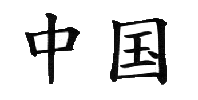China Beat Archive
Date of this Version
5-5-2012
Document Type
Book Review
Abstract
Unsurprisingly, the Chinese government levied a “three nos” ban—no sales, no distribution, and no promotion—against Dream of Ding Village after its publication in 2005. Though the storytelling relies heavily on dream sequences, Yan takes little poetic license when exposing the depth of the state’s culpability in spreading HIV among poor, medically-naïve farmers. He is just as uncompromising when detailing how officials denied responsibility for the ensuing AIDS epidemic, even as they profited from its human tragedy. No one in Ding Village receives medical care, mental health counseling, food assistance, or a chance to hold the blood heads legally accountable. Cast adrift by government administrators, the sick villagers quarantine themselves in the school and wait to die.
Yan’s novel dares to imagine the early years of China’s AIDS epidemic, when farmers in central China awoke from visions of wealth and prosperity to find instead incurable illness and death. Aside from a few stories in newspapers, academic articles, and the memoirs of activist-physicians like Dr. Gao Yaojie, we have few personal accounts from the earliest victims of the blood disaster. Many of these individuals passed away before the Chinese government began offering free anti-retroviral treatment for AIDS in 2003. While the language is sometimes sentimental, Yan’s novel offers powerful testimony of the suffering victims of the blood disaster, their families, and communities have endured in the wake of a wholly preventable tragedy.
Included in
Asian History Commons, Asian Studies Commons, Bioethics and Medical Ethics Commons, Chinese Studies Commons, Clinical Epidemiology Commons, Community Health and Preventive Medicine Commons, Health and Medical Administration Commons, Health Services Administration Commons, International Public Health Commons, International Relations Commons, Other Public Health Commons

